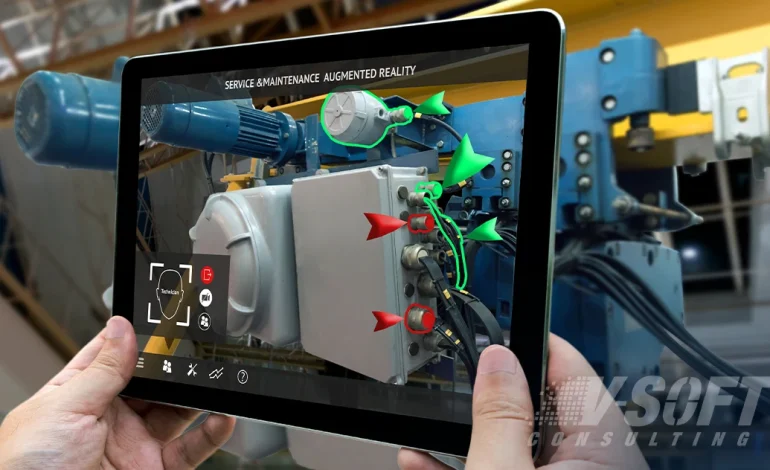Exploring The Ubiquitous Augmented Reality: The Future is Now

The world of technology is rapidly advancing, and one of the most exciting new developments is the ubiquitous augmented reality. It is a technology quickly becoming a part of our everyday lives and has limitless potential. This technology can transform how we interact with our environment and how we experience the world around us. In this blog post, we will explore ubiquitous augmented reality and discuss how it will shape the future. We will also look at some of the current applications of this technology and the ways it is being used to make our lives easier and more enjoyable.
Introduction
In recent years, augmented reality (AR) technology has rapidly advanced and has the potential to become ubiquitous in our everyday lives. With AR, users can experience a blend of the physical and digital world by superimposing digital information onto their surroundings. The growth and impact of AR in the market are immense, with experts predicting that the number of AR users will reach 1.96 billion by 2021. This article aims to explore the current state of AR and the challenges it faces in becoming a widely used technology. It will also discuss some successful examples of AR implementation and how the future of AR looks promising.
Discuss how the number of AR users is expected to increase

In today’s world, technology is advancing at an incredible pace. Ubiquitous augmented reality (AR) is one such technology transforming how we experience the world around us. AR overlays digital information in the real world and enhances our perception of reality. According to Statista, the number of AR users worldwide will reach 1.73 billion by 2024. This surge in AR users can be attributed to various factors, such as the increasing adoption of smartphones, advancements in AR technology, and the proliferation of AR-based apps and games.
AR is not just a buzzword but an increasingly important aspect of modern life. From advertising to entertainment, education to retail, AR is transforming industries. The growth of AR in the market can be seen in various sectors. The retail industry is leveraging AR to enhance the customer shopping experience by offering virtual try-ons, AR-enabled catalogs, and personalized recommendations. The education sector is using AR to make learning more interactive and engaging. AR is also used in healthcare to simulate complex surgeries and train medical professionals.
Despite the numerous benefits of AR, implementing it on a large scale presents challenges. One such challenge is creating content that meets the quality standards for a seamless AR experience. Additionally, implementing AR requires a significant investment in hardware and software infrastructure, which can be a barrier for small businesses.
The Growth and Impact of AR in the Market
The ubiquitous augmented reality industry has been experiencing tremendous growth in recent years and is projected to continue to do so shortly. According to a report by Statista, the number of AR users worldwide is expected to grow from 598.5 million in 2019 to over 1 billion in 2021. Technological advancements, consumer demand, and increased adoption of AR in various industries fuel this rapid growth.
One of the critical drivers of AR’s growth is the rising popularity of mobile devices, which provide an ideal platform for AR applications. Smartphones and tablets are equipped with cameras, sensors, and processing power, making it easy for users to experience AR content in real-time. This has led to the proliferation of AR apps and games that users can download and use on mobile devices.
AR technology allows marketers to create interactive
Another factor contributing to the growth of AR is its increasing use in marketing and advertising. AR technology allows marketers to create interactive and engaging experiences for their target audiences, enhancing brand awareness and driving sales. AR is also used in retail, real estate, and healthcare industries to provide customers with immersive experiences that allow them to visualize products, services, and spaces before making a purchase or decision.
Despite the growing popularity and potential of AR, there are still challenges that must be overcome to realize its potential fully. One major challenge is the development of AR content that is both compelling and functional. This requires a deep understanding of user behavior, preferences, and needs and a keen eye for design and storytelling.
Another challenge is the need for robust, reliable infrastructure to support AR experiences. This includes hardware such as smartphones, tablets, and smart glasses, as well as software such as operating systems and AR development platforms. Additionally, there is a need for high-speed connectivity and low-latency networks to enable seamless AR experiences.
Challenges of Implementing AR on a Large Scale

While the growth and impact of ubiquitous augmented reality (AR) in the market is exciting, it is not without its challenges. Implementing AR on a large scale can present several hurdles that must be overcome to realize its potential fully.
One major challenge is the need for more robust and sophisticated technology. The hardware and software needed for AR must be robust and precise enough to track and display virtual objects in real-world environments accurately. Additionally, these technologies must function reliably and consistently across various devices, operating systems, and network configurations.
Another challenge is the need for compelling content
AR is only as effective as the content it displays, and creating high-quality AR content can be complex and time-consuming. Companies must be willing to invest in developing engaging and immersive AR experiences that will captivate users and keep them coming back for more.
Finally, logistical challenges are associated with implementing AR on a large scale. For example, the infrastructure needed to support AR experiences may require significant investments in physical equipment, such as cameras, sensors, and other hardware. Additionally, the logistics of distributing and keeping AR experiences across a wide range of devices and platforms can be complex and time-consuming.
Despite these challenges, the potential benefits of AR are too great to ignore. By investing in the necessary technology, content, and infrastructure. companies can leverage AR to create innovative new, engaging, and immersive products and services. The future of AR is here, and those who are willing to rise to the challenge will reap the rewards of this exciting new technology.
To see the successful implementation of AR, we need to look no further than Pokemon Go. The mobile game quickly became a cultural phenomenon in 2016. Using AR technology to bring beloved creatures to life in the real world. It became one of the most successful mobile games of all time. Raking in over $3 billion in revenue and demonstrating the vast potential. AR for engaging and entertaining audiences on a massive scale.
Conclusion
In conclusion, ubiquitous augmented reality is a powerful technology with immense growth potential. As the number of AR users continues to rise, the opportunities for businesses to incorporate. This technology into their operations will also increase. With AR, companies can provide innovative customer experiences that improve engagement and drive sales.
However, challenges are associated with large-scale AR implementation, including the need for robust infrastructure and user education. Despite these challenges, AR is already significantly impacting various industries, from gaming and entertainment to retail and healthcare.
Overall, it is clear that the future of AR is exciting. And we can expect to see more innovative applications of this technology in the years to come. The companies that take advantage of AR now will be the ones that reap the rewards in the future. If you still need to explore how AR can benefit your business, there’s no time like now!





